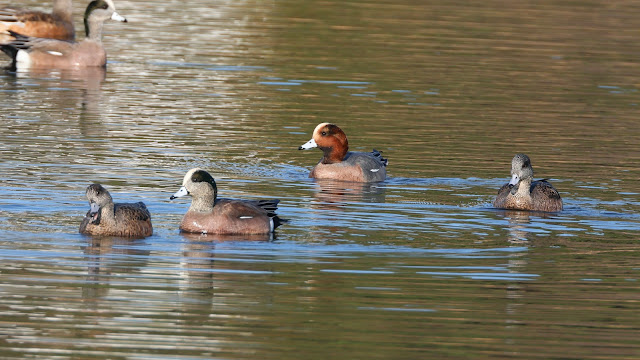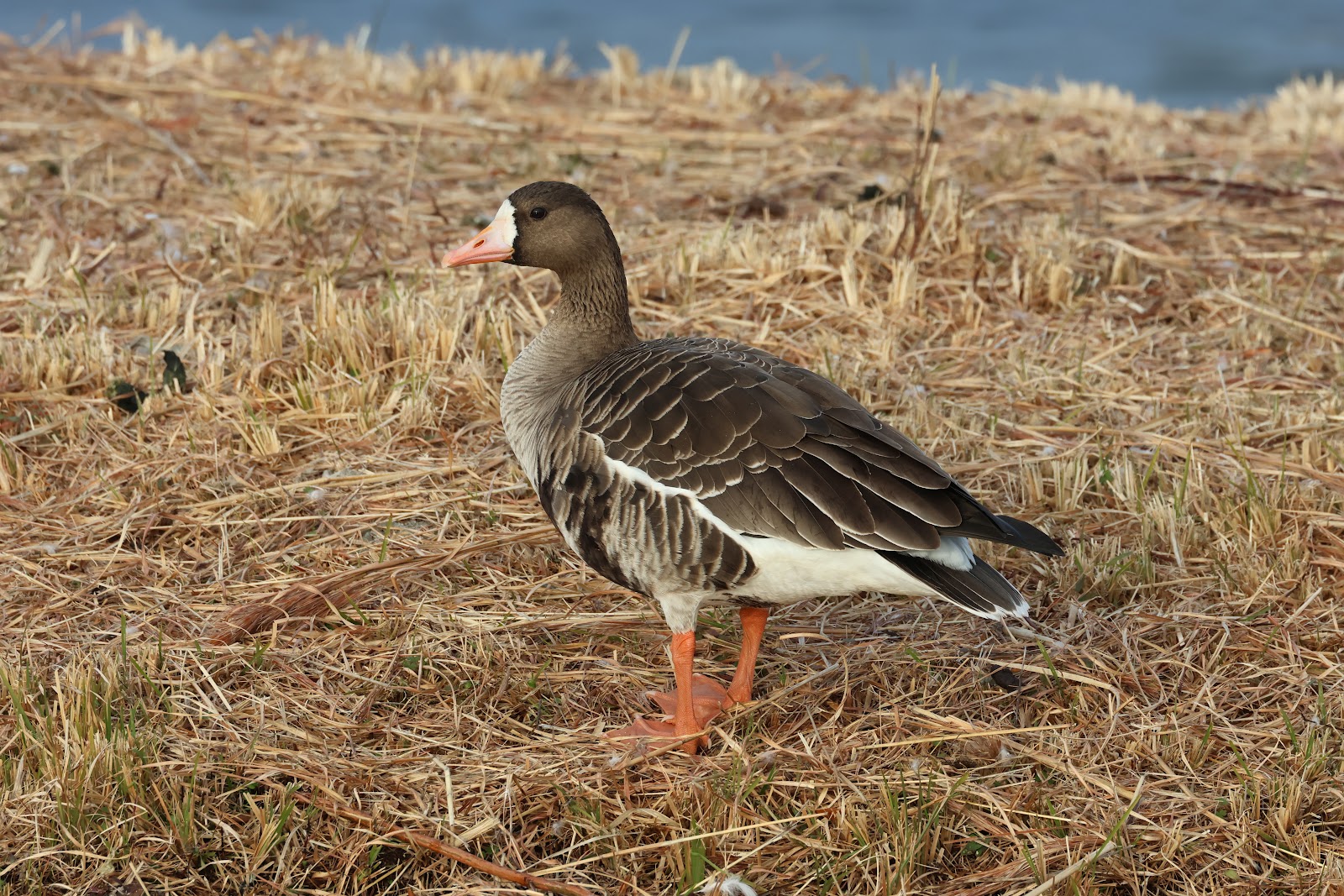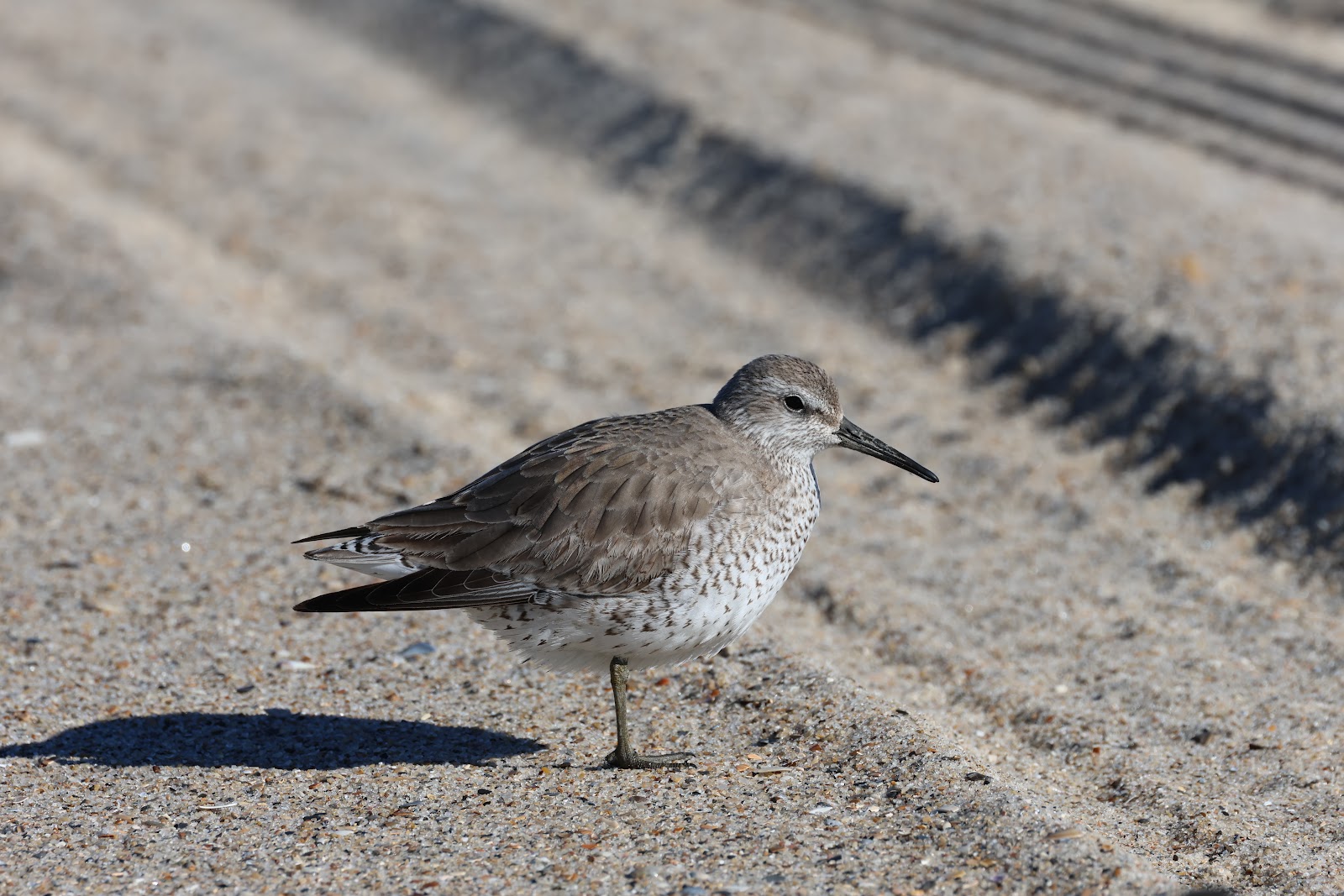After getting back from Eleuthera, Sam C called and asked if I wanted in for a small trip into Landfall which is a gated community in New Hanover County near the beach. There was an Eurasian Wigeon reported and I don't have one for my county life list so I was in!
It didn't take long to find it as the lake is small, and after some initial hoorays Sam said, "hmm looks like it was some green behind the eye."
Eurasian Wigeon - we scrutinized this for a while thinking but not saying the dreaded H Word (Hybrid) and I did a quick Google search. Apparently there is quit a bit of literature on this anomaly in what is otherwise a pure Eurasian Wigeon including plenty examples from Europe. Some speculate hybridization but most recognize these birds as pure Eurasian based on on all the other marks which don't show any hybrid traits, such as the clean flanks and and creamy crown.
When we repositioned ourselves on the east end of the lake with the sun behind us, we couldn't reproduce the green spot.
I posted the pics to the Advanced Bird ID Facebook Page and the consensus was pure Eurasian Wigeon. Hooray!
Saturday and Sunday were slated for the New Hanover and Brunswick County Christmas Bird counts respectively.
For New Hanover, I was assigned Ashley High School and all the area between there and the River Lights community to the north. Ashley HS is a hotspot in Wilmington and is home to a very productive little retention pond. I arrived shortly after first light and the geese flocks started to come in around 8am.
Snow Goose
Snow Geese - A white and "blue" phase has been coming here off and on for several weeks.
This pond always has tons of Gadwalls which are one of our most handsome ducks.
But this Greater White-fronted Goose has been the star of the show at Ashley for several weeks now. Generally these are regular rare birds in North Carolina but usually they are seen at a great distance. The hunters call them Specklebellies.
Eastern Bluebirds are always a crowd pleaser.
Pine Warblers can come in all different plumage variations but they are easy to ID when all yellow like this.
I searched hard and long for the Loggerhead Shrike that usually graces this spot to no avail. So I moved on to the Cape Fear River Park. This little pocket park used to be a gem as it was bordered to the south by some sandy scrub that sparrows and other passerines loved. Unfortunately in the name of "progress" it has all been developed into row homes.
American Goldfinch
Eastern Bluebirds love Red Cedar berries this time of year when insects are scarce.
Next stop was the River Lights community which can sometimes attract some water birds on the retention ponds strewn throughout the development. I checked all the ponds and couldn't turn up anything interesting, so I parked at the main River Lights business district and hiked my way north. I noticed a long pier jutting into the Cape Fear about half a mile north that had a bunch of gulls so I headed in that direction. It turns out that the pier is part of an old abandoned marina called Watermark Marina and the birds have taken it over in the absence of humans. I loved abandoned facilities for the post apocalyptic feel. It makes me feel like I am in some wasteland and I have to survive on my own.
I was a little surprised to find that most of the gulls were Bonaparte's Gulls. I will have to check this pier more often.
Christmas Bird Counts are fun because they force you to check spots that you ordinarily wouldn't. For example, I was heading down the busy road south of the marina and saw some woods on the side that looked promising for passerines. It wasn't posted, but it did look like it was private land owned by some utility. I jumped into the woods and came out on a power line cut that did have some birds.
Orange-crowned Warbler.
Gray Catbird
Eastern Towhee
On Sunday, we had the Brunswick county circle to complete and I was assigned to hang out with Greg and Harry on the spit which is not really an assignment as much as a good time. But first I stopped at the monument to pick up the Lark Sparrow that has been hanging out next to the parking lot.
Lark Sparrow - while I was looking at this stunner, Ron C the compiler of the count showed up. It was good to see an old familiar face. He is heading to Antarctica soon so I shared some of my experiences with him.
Ruby-crowned Kinglet
Harry kindly offered to drive out on the spit and we headed out to find some shore birds. The Fort Fisher Spit is the stretch of beach directly east of all the mudflats in the Basin which is just north of Zeke's Island. During high tide, all the birds that feed in the mudflats head to higher ground to wait out the tide. The numbers of shorebirds that aggregate here on the beach during high tide are massive.
I couldn't believe how many Least Sandpipers we found. Over 300! Usually Dunlins and Western Sandpipers outnumber the Leasts by 10 times, but this time the numbers were basically even.
Red Knots are always a good bird to find in the winter so were were pleased as punch to find this one.
Western Sandpipers basically look like mini Dunlins.
Semipalmated Plovers need to be scrutinized for potential Ringed Plovers.
Dunlins are pretty nondescript this time of year.
Greg swears that he heard Long-billed Dowitcher calls in the flock but I couldn't make one out visually that would be a slam dunk. This one had tail bars that were more black than white but otherwise the bill looked marginal.
Periodically a fisherman would drive through the birds while we were counting and we had to start all over again which was tough because I only have 10 fingers and 10 toes.
We tried for Marsh and Sedge Wrens and found one of the former but only the Yellow-rumped Warblers posed for pics.
Sometimes I like to post a year in review but I think I will skip it this year and my next post will be starting out the New Year with a bang.



























No comments:
Post a Comment